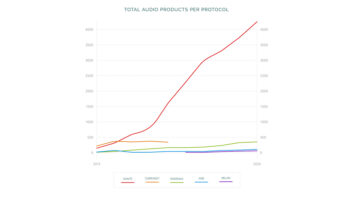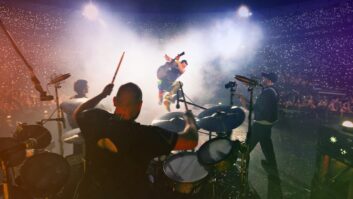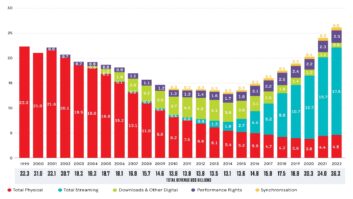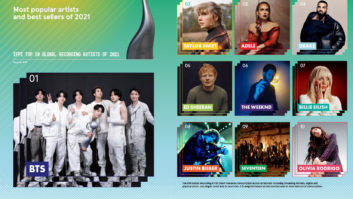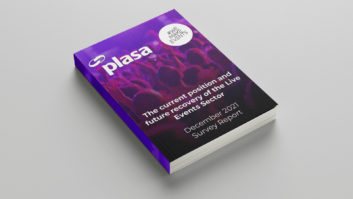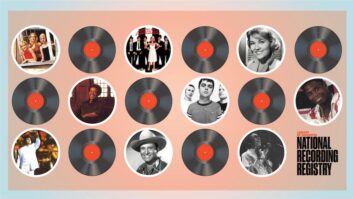
Welcome to the “Robair Report” 2.0. Starting this month, the “Report” is back and covering a broad range of topics for the recording musician. “The Robair Report,” originally launched online by Electronic Musician, focused on the gear and techniques we use in our personal studios and out in the world, whether we’re recording shows, doing pre-production or sampling environmental sounds. Version 2, however, will work from the perspective of the recording musician, navigating the confluence of pro and prosumer gear that promises unprecedented capabilities for working with sound. In addition, the new “Report” will encompass print, online and the occasional tweet to keep you in the loop with late-breaking news.
advertisement
But while the changes in technology seem to be accelerating, the core issues of sound recording remain constant. I’ll look at the practical applications and the ramifications of emerging technologies rather than simply tout new products. For example, in the first installment, I noted how the overuse of pitch correction seems to have given us—music creators and consumers alike—a more accute awareness of pitch. While I admit that my assertion was completely anecdotal, the idea is worth considering because audiences know more about the recording process now than at any time in the history of recorded music: The average listener is hip to studio trickery.
In fact, it’s likely that a greater percentage of our listeners have participated in some form of musicking (a term coined by the late Christopher Small to indicate all forms of musical activity, from listening to playing) than previous generations. Consider the cornucopia of sound-related software products available for computers and mobile devices that are aimed at non-specialists. Then wrap your head around the fact that a reported 2 million people have downloaded one of T-Pain’s consumer-oriented pitch-correction apps for iOS.
I’m not pointing this out because I want to villify the technologies that are used pejoratively as ’verbs such as “auto-tuning.” I’m interested in exploring how we use these tools to create music, and how their use changes the ways we work, listen and create. I think we can all agree that the gear itself isn’t to blame for music we dislike, although it can (and very often does) influence what we do.
I’m also a firm believer that gear does not necessarily become outdated or obsolete simply because a new technology comes along to “replace” it: Although we have the potential to work in a 64-bit recording environment, it doesn’t mean than a 32-bit system is less able to capture an inspired performance. Anything that can record, reproduce or alter sound is fair game. And I mean anything.
Consider analog cassette tape and all the artifacts that pertain to it. In the right hands, the medium becomes a nonlinear filter. Low-cost toys and consumer electronics are sources and processors just waiting to be explored, and that’s before they’ve been hacked and circuit-bent. But I’m not referring to the fringe audio-playground of unknown indie musicians. Artists and engineers from the trenches to the Grammys are checking their technological biases at the door, having answered the question of whether something is analog or digital, high or low resolution, with a “Who gives a f#%@. Let’s make music.” We’ve reached the technological point of all-fi, where we can embrace any fidelity or resolution. All that’s needed is the creativity to see the musical potential.
I’m fortunate enough to teach audio recording classes at a local college, so I get a weekly reality check of what’s possible from the next generation of artist/engineers who lack the biases that many of my peers have about how things should sound. With blissful ignorance about the history of the recording sciences, my students grasp the full potential of the latest technologies quickly, unfettered by such trivialities as the collapse of traditional distribution models, while taking full advantage of what social networking offers.
And they’re savvy about the marriage of sound and visuals, using whatever tools they can find to create a video for their latest song, or a song for their latest video. In their world, the segregation of audio and video creation, like the divide between being an engineer and a musician, is disappearing as quickly as the polar ice cap. And it won’t be long before college courses cover both subjects in the same class.
Okay, I know many of you are rolling your eyes and saying to yourself that most DAWs are already bloated with features, and the last thing we need is to add the deep feature-set of a video-editing app. Fine. Tell that to my students who, while still in their teens, have already mastered Reason, Live and at least one of the major DAWs while having the chops to edit video in Final Cut or Premiere. Whoever comes up with the all-in-one app that sells for $99 or less could do for MI what Steve Jobs did for online music distribution.
The “Robair Report” is intended to be a conversation that extends beyond the two of us. My goal is to explore the topics that are on the minds of musicians and engineers who are trying to keep focused on the music rather than getting distracted by the technology.
